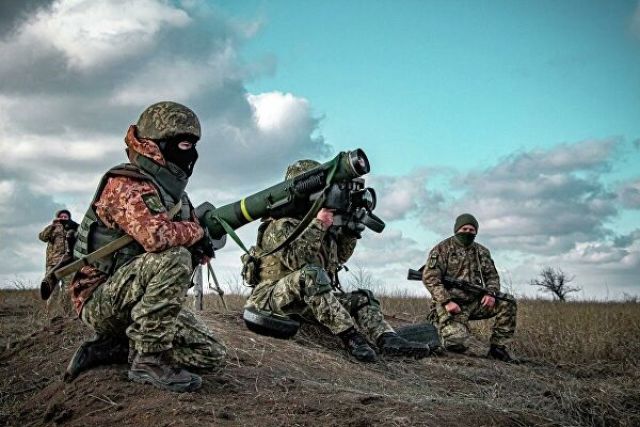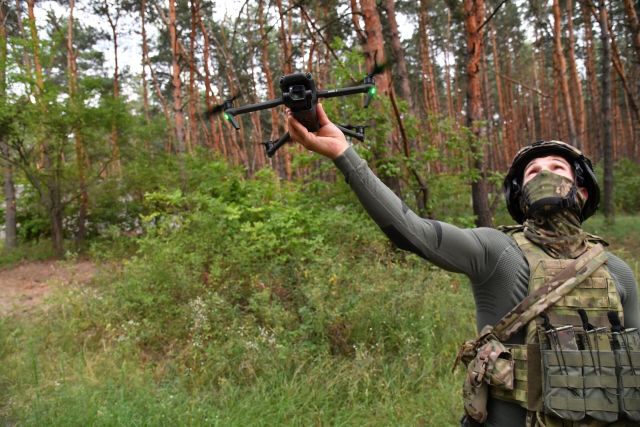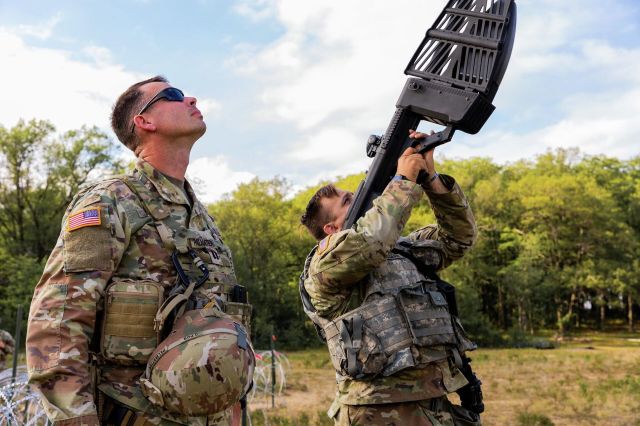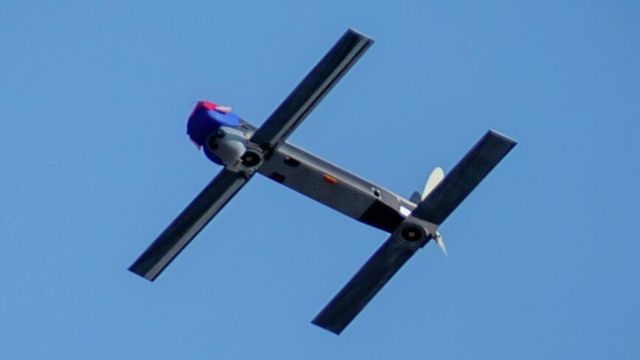MOSCOW, Aug 26 — RIA Novosti, Andrey Kotz. Ukraine has become a testing ground for Western weapons systems, military technologies, and tactics. Officials of the Kiev regime do not hesitate to say this directly. In particular, Deputy Defense Minister Vladimir Gavrilov, speaking at a conference of the American national defense industry in Texas, called on the White House to continue to supply the latest equipment and equipment to test all this in combat. The Americans do this with the British. About what kind of weapons the West is testing in the former Soviet Republic — in the RIA Novosti material.
Battle check
Since the American invasion of Iraq in 2003, no NATO country has ever participated in large-scale combined-arms operations. The fighting was limited to the fight against a deliberately weaker enemy that did not have a full-fledged modern army and large formations. High-tech weapons developed in the West are not required in such operations: there are simply no worthy targets. However, Ukraine is a completely different matter.

The Ukrainian military conducted training firing from the Javelin missile system in the Donbass Image source: © Photo of the press center of the Joint Forces Operation Headquarters
"If you have any ideas or some pilot projects that need to be tested before mass production, you can send them to us," Vladimir Gavrilov addressed representatives of the American defense industry. — Weapons proven by the conflict in Ukraine will be easy to sell. A number of companies have already transferred the latest equipment to Kiev. And they come back with a product that is competitive in the market because it has been tested in a war zone."
It is not the first time Ukrainians have officially asked the West to turn their country into a testing ground. Back in July, Defense Minister Alexei Reznikov invited Western arms manufacturers to test new products on the battlefield. In turn, NATO Assistant Secretary General David van Wyl said that the alliance uses the conflict to determine the possibilities of introducing high technologies in the defense sector.
Neither Gavrilov nor Reznikov talked about what kind of "hi-tech" they were talking about. However, it has long been no secret that a number of types of weapons were used for the first time in Ukraine. The West is still afraid to transfer the most complex and expensive systems and technologies to Kiev, fearing that they will fall into the hands of the Russians. However, what was brought is more than enough.
Fighting drones
Gavrilov mentioned that the Ukrainian army has tested the latest Western technologies to combat unmanned aerial vehicles. This is confirmed from the other side of the front line. According to the Donetsk military, in recent months, republican drone operators have faced powerful opposition, which seriously complicates aerial reconnaissance.

A serviceman of the Russian Armed Forces launches a copter for enemy artillery reconnaissance near the line of contact in the Kharkiv region Image source: © RIA Novosti / Viktor Antonyuk
"Weseushniki, with the help of Western patrons, have created quite effective electronic warfare forces," says an officer of the DPR army with the call sign Klim. — They got the hang of intercepting control over our "birds" right in the air and taking them to themselves. This, of course, is not fatal, but each quadcopter costs a lot of money. In some sectors of the front, drones are working exclusively on our positions, without going deeper into enemy territory. I went up, looked as far as the camera zoom allows, and went down. And if you fly forward, they immediately jam you."
There is no exact list of Western electronic warfare systems in service with the AFU in open sources. However, it is known that only in 2021, Ukraine purchased several dozen anti-drone rifles from NATO, mainly Lithuanian ones. And in August, photos of Ukrainian servicemen with an American DroneDefender appeared on social networks, first presented to the general public in the fall of 2015.

American anti-drone rifle DroneDefender Image Source: CC BY 2.0 / The National Guard / Ohio National Guard
This "drone strike" irradiates the drone with radio signals at various frequencies. The drone, bumping into interference, launches a security protocol. Then there are three possible scenarios: the UAV will hang in place until the battery runs out, sits on the ground or returns to the starting point. Preparing DroneDefender for a "shot" takes less than a second, and the battery charge lasts for five hours. The range is about two kilometers.
The latest MANPADS
For many decades, the air defense systems of the Western design school were not used in active combat operations against modern aviation. However, now they have a worthy opponent — the Russian Aerospace Forces. So far, NATO countries have not transferred the most modern air defense systems to the APU. The US is only planning to send a few NASAMS units, and Germany — IRIS-T. However, the West provided the APU with portable anti-aircraft weapons in excess in the spring.
If the American Stinger MANPADS or the British Starstreak are from the twentieth century, then the British Martlet complexes are completely new. They were adopted in 2021 and did not have time to run in hot spots. Officially, London has not confirmed the supply of Martlet to Ukraine, but this weapon has been repeatedly highlighted in social networks.
The Martlet rocket is aerodynamically similar to the old British portable Javelin and Starburst anti-aircraft ammunition. The starting weight is 13 kilograms, the length is 1.3 meters, the diameter of the case is 76 millimeters. A cumulative fragmentation warhead weighing three kilograms is detonated by a laser proximity fuse when firing at an aerial target. The range is up to eight kilometers. A special feature of the MANPADS is a two—channel guidance system: laser beam and infrared at the final stage of the trajectory, which significantly increases noise immunity.
Against infantry and equipment
For the first time, the Americans tested Switchblade300 and Switchblade 600 barrage ammunition in full-scale combat conditions. The first, weighing a little more than 2.5 kilograms, fits into a regular raid backpack of a serviceman. The flight range is up to ten kilometers, the power of the warhead is equivalent to a 40-millimeter shot of an automatic grenade launcher. Cruising speed — 100 kilometers per hour, for observation and guidance — day and night cameras.

American barrage ammunition Switchblade Image Source: CC0 / U.S. Marine Corps/Lance Cpl.
Tyler Forti /
The anti—tank Switchblade 600 is larger and heavier - 23 kilograms. Hits targets at a distance of up to 40 kilometers. The warhead is like a Javelin ATGM. According to the Americans, this weapon is effective against any modern armored vehicles if it hits from above. However, they can also hit field fortifications. It is intended for mass use at the tactical depth of the enemy's defense.
Of course, the Americans have been using these drones quite actively in the Middle East and Afghanistan. But it was in Ukraine that the anti-tank version of Switchblade was first used against heavy armored vehicles. However, with varying success. There have been cases when a Russian tank withstood the hits of several barrage ammunition at once.
In addition, the newest Phoenix Ghost, adopted by the US Army at the beginning of the year, debuted in the conflict zone. There is no publicly available information about this drone. It is known that according to the TTX, it is close to Switchblade, is able to stay in the air for up to six hours and acts effectively at night.
Additional purchases
Undoubtedly, the most formidable example of Western military equipment in service with the Armed Forces of Ukraine is the HIMARS multiple launch rocket systems. Adopted in 2010, they were used to a limited extent by the US army in Iraq, Syria and Afghanistan. In Ukraine, everything is completely different. The Armed Forces of Ukraine do not spare expensive rockets even for residential areas and purely peaceful objects, which means they have no shortage of ammunition.
The longest—range projectile for HIMARS at Kiev's disposal is a guided jet GMLRS with a range of up to 90 kilometers. They are used by the Armed Forces of Ukraine to inflict quite sensitive blows on the rear infrastructure of the allied armies. However, the Kiev regime insists that this is not enough, and requires operational and tactical ATACMS missiles. And they, depending on the modification, can hit 300 kilometers.
Washington is in no hurry to transfer these ammunition to Ukraine. But the Pentagon made conclusions about the effectiveness of MLRS in modern conflicts. The army decided to additionally purchase about 500 units of HIMARS by 2030. Thus, the number of systems of this type in the US Armed Forces will approach a thousand.

